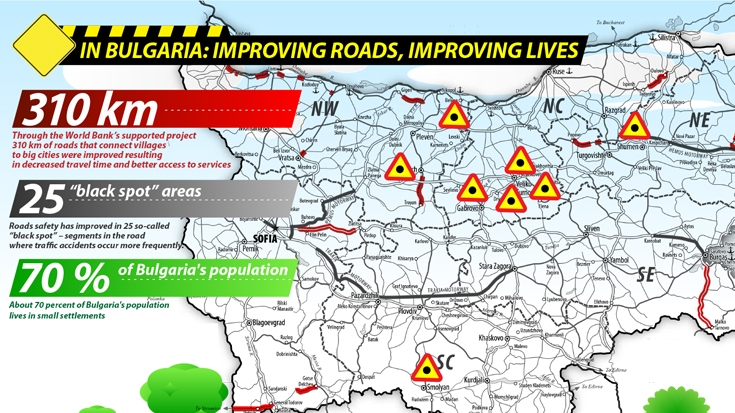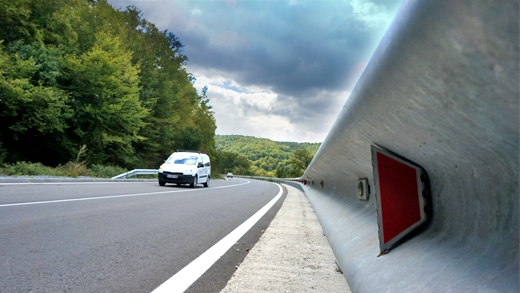Six years ago, it took public buses an additional 30 minutes than it does today to travel from the town of Burgas, on Bulgaria’s Black Sea coast, to the small, southern town of Malko Tarnovo. Travel time has decreased along this 62 kilometer route thanks to improvements along the main road – offering residents in the remote town of Malko Tarnovo better access to services, especially healthcare. The new road has also improved access into the town, stimulating economic activity by doubling tourism in the area.
This is just one of the many examples of success resulting from the Roads Rehabilitation Project in Bulgaria, which repaired 310 kilometers of roads, connecting smaller towns and villages with bigger cities. Nearly 80% of the national road network in Bulgaria are second and third tier roads, meaning that improving these roads improves the lives of the people who live in the smaller areas along these roads, and who rely on this transportation network for their livelihoods.
When Bulgaria became a member of the European Union in 2007, it also became eligible to draw upon EU grants to build and modernize its infrastructure, including roads. The project ensures that funds from the European Union (EU) used to procure equipment are spent wisely and transparently. The equipment is now being deployed across the country for all road projects – ensuring that improvements to both roads and livelihoods will continue well beyond the life of the project itself.




